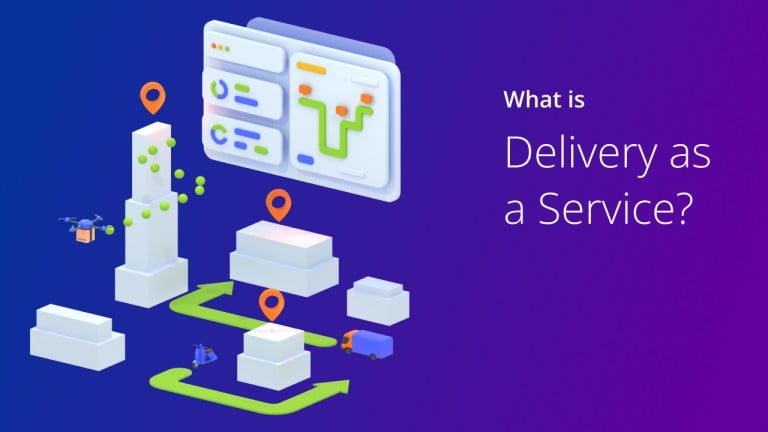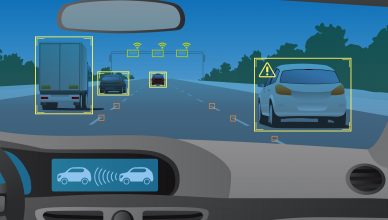You might sell a revolutionary product online that could disrupt your industry. But you can’t make an impact if you fail to put the product in customers’ hands just as when they want it.
That’s because delivery speed is a top priority now among online shoppers.
According to a survey by digital consultancy Avionos, the largest % of respondents, 62%, said they prefer fast shipping.
But making quick deliveries is a Herculean task.
You need to have enough drivers and vehicles, plan and schedule routes, manage drivers, and provide accurate ETA updates to customers.
That means you must make a significant investment to build a sophisticated delivery infrastructure that can keep up with the demand for speed, and that’s where Delivery as a Service, or DaaS, comes in.
DaaS providers offer a seamless and scalable delivery solution by leveraging cutting-edge technology and vast logistics networks.
In this article, we will discuss DaaS in detail, explain how it works, its pros and cons, and, most importantly, compare it with in-house delivery services. So, let’s get started.
What is Delivery as a Service (DaaS)?
Delivery as a Service (DaaS) is a logistics model in which a third-party provider offers delivery services to a business, such as an eCommerce company, or a restaurant.
The DaaS provider manages the entire delivery process, so the business doesn’t need to hire drivers, purchase vehicles, or build delivery capabilities in-house.
How Does Delivery as a Service (DaaS) Work?
Here is a step-by-step process of how DaaS providers work.
Step 1: Gather and Assess Your Requirements
The DaaS provider will first collect and evaluate your requirements thoroughly to understand what expectations they need to meet.
Step 2: Integrate Orders
A DaaS provider integrates your order management system with its advanced technology platform through APIs. This ensures that new delivery orders can easily be sent from your business to the service provider to initiate deliveries promptly.
Step 3: Allocate Resources
Third-party delivery service providers use sophisticated software, such as a route planner, to plan delivery routes and intelligently allocate delivery requests based on distance, time windows, traffic, and real-time demand.
Step 4: Monitors Delivery Progress
Many DaaS providers monitor vehicle and driver movements in real time using a GPS tracker to ensure on-time deliveries.
Step 5: Collect Proof of Delivery
Once the deliveries are made, the driver captures proof of delivery and updates the delivery status to ensure transparency and avoid any customer dispute.
These are not the only services DaaS offer. They can even help with warehousing and inventory management, picking and packing orders, and labeling for shipment.
Many DaaS providers offer such a comprehensive approach to businesses looking for end-to-end delivery solutions.
Advantages of Delivery as a Service (DaaS)
Here are some of the benefits of DaaS which are fueling the growing demand.
Expands Reach
Expansion is capital-intensive and challenging.
But with a DaaS provider by your side, you would no longer need to be limited to local deliveries and expand your footprint anywhere without making a dent in your pocket.
Helps Focus on Core Competencies
Outsourcing deliveries will save time otherwise spent on delivery planning and management. Therefore, you can utilize the time saved to dedicate more energy to focus on your core competencies.
Scalable and Flexible
Whether it’s a slow month or a holiday season rush, DaaS providers can easily scale up and down as per your requirements.
If there are more orders, they can assign more drivers. And if there are fewer orders, then fewer drivers. Doing it in-house would either have wasted or strained your resources.
Plus, whether you want to make same-day deliveries, next-day deliveries, or 2-day shipping, DaaS providers can accommodate your requirements.
Financially Sustainable
Third-party delivery services often charge based on shipping volume requirements.
Therefore, it’s more financially sustainable than making huge upfront investments in building delivery infrastructure.
Plus, you don’t have to worry about the return on the investment every time, and you can provide expedited shipping at competitive prices.
Increased Efficiency
Third-party delivery service providers have well-thought-out processes for managing delivery operations.
They use advanced technology solutions, such as route optimization software and warehouse management systems, to improve efficiency and reduce errors or delivery delays.
Disadvantages of Delivery as a Service (DaaS)
Although DaaS has several benefits, below are some drawbacks, which you must also know to ensure you stay informed before implementing it.
High Dependency
Outsourcing means you will have little control over the last-mile delivery process, fleet operations, and drivers, which can be risky.
If the DaaS provider experiences hiccups, such as logistical disruptions or driver shortages, it can directly impact customer satisfaction.
Increased Expenses
Although DaaS can reduce your overhead expenses, it comes with its own expenses.
Different DaaS providers can have different pricing models. Some might charge based on volume, while others may offer subscription-based models.
Therefore, you must perform some number crunching to ensure that DaaS aligns with your budget, operational requirements, and profitability goals.
Regulatory Compliance
Various local, state, and federal regulations govern delivery operations. These include vehicle standards, data privacy, and driver qualifications.
So, if your DaaS provider doesn’t adhere to the regulations, you could also unknowingly face legal issues and hefty fines.
Maintaining Reputation
Delivery experiences that can make or break your business will be entirely in someone else’s hands.
Any lapses, such as damaged goods or delayed delivery, can directly hurt the business reputation you might have built over the years.
Data Security
You must share sensitive customer information with your DaaS providers, such as addresses, phone numbers, and even payment details.
Data security breaches can invite legal hassles, broken customer trust, and reliability.
DaaS Vs. In-House Delivery: Which is Right For You?
DaaS and In-house delivery both have their own pros and cons. Below, we break down when you should opt for one over another to help you make an informed decision.
When You Should Use Delivery as a Service (DaaS)
- If you are just starting up and lack the financial resources to develop a delivery infrastructure.
- If you want to tap new markets and scale faster without the burden of investing and managing assets.
- If your business experiences significant demand fluctuations.
- If you sell products requiring extra care for delivery, such as transporting hazardous materials, temperature-sensitive goods, oversized items, or those that need specialized handling.
When You Should Go for In-House Delivery
- If you want to make direct and strong relationships with your customers.
- If you want complete control over your delivery operations.
- If you are concerned about regulatory compliance and data security.
How Route4Me Makes Delivery Management Seamless and Cost-effective
Route4Me route optimizer software offers many powerful features that make delivery operations management a breeze, whether you are a small or medium business or an enterprise. Here’s how they help.
Scale Up Easily without a Hefty Investment
Route4Me’s delivery route planner helps plan well-optimized multi-stop routes, considering traffic, weather, roadblocks, and other constraints. This ensures on-time delivery and helps drivers make more stops in less time.
Therefore, you can serve more customers and cover new areas without purchasing more vehicles and hiring additional drivers.
In addition, Route4Me’s route optimizer offers an interactive map, territory management, and color-coding features that help you tap new areas, identify potential customers, and evaluate your capabilities without spending a dime.
Stay on Top of Your Delivery Activities in Real-time
Route4Me comes with a built-in commercial GPS tracker to help you monitor your vehicles and drivers on a map in real-time and bolster your control over your delivery operations.
Whether your drivers are stuck on the road due to vehicle breakdown, driving recklessly, or making personal stops – you’ll know everything as and when it happens so that you can take necessary actions to avoid possible delivery hindrances.
Keep Your Costs Under Control
Route4Me ensures every route is up to 35% shorter on average. If you spend more than $3,000 a year on gas, that’s over $1,000.00 in savings!
Plus, it comes with a comprehensive reporting and analytics feature that helps you track average gas costs, total fuel expenses, total distances covered, and more to stay on top of your expenses.
Frequently Asked Questions (FAQs) about Delivery as a Service (DaaS)
How is Delivery as a Service (DaaS) different from traditional delivery models?
How to choose a reliable DaaS provider?





